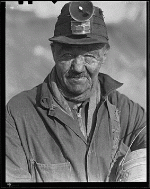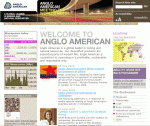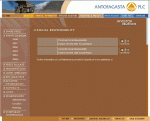 “Great Uncle ‘Erbert’s coming for dinner!” called my Mum.
“Great Uncle ‘Erbert’s coming for dinner!” called my Mum.
“Not Great Uncle ‘Erbert!” yowled her children. He was old and grizzled with white facial hair which seemed to clump together for warmth in random places before hibernating up his nostrils every night.
The wind whistled around the gaps in his misshapen teeth and there was always that strange smell which I later came to associate with men’s public toilets. We tried to avoid him whenever possible.
In the same way, environmentalists avoid the mining industry whenever possible.
This is not surprising: an industry which digs large holes in the ground and then sloshes toxic chemicals all over the contents is unlikely to go down well with the green movement.
What is more mining companies, unlike Great Uncle ‘Erbert, are not fictional. In fact, they operate predominantly in developing countries and so should have a lot to say about their sustainable practices on their websites.
Wide Ranging Content
Anglo American is one of the largest mining companies in the world. Their operations stretch across the Americas, Europe, Africa and Australia and include household names such as De Beers and Tarmac.
Like any good corporate website, it has a link from its top banner to its sustainability section. This immediately places the issue on the same footing as Investor and Media Relations.
In addition, this link automatically expands to be a menu, allowing the visitor to gain access with a single click to topics ranging from Anglo American’s sustainability reports to its approach to HIV/AIDS.
Within the section here are links to a whole slew of policies, speeches and presentations, a discussion of “Good Citizenship” and descriptions of the eight international schemes Anglo American plays a part in.
There’s also a page dedicated to the sensitive issue of the transfer of a share of ownership, management and benefits of business interests in South Africa into the hands of those previously excluded under apartheid.
Most intriguing of all is the Anglo American’s Social-Economic Assessment Toolbox (SEAT). This methodology has been deployed in over 16 countries to support and engagement with local communities.
This will be covered in more detail in a future post.
Burying The Facts
Antofagasta is another FTSE 100 mining company. Formed from the Bolivian Railway Company, it mixes railway and water interests in South America with being one of the largest copper producers in the world.
On the corporate website sustainability is part of the Investor Relations section, accessible throughout the site from drop down menus from the website’s title bar.
But the single page isn’t much to look at on arrival. Two links to extracts from the Antofagasta’s Annual reports and, a little bizarrely, a link to the Spanish-language website of one of its mines in Chile.
This means the content does have one thing in common with the Anglo American site: both are devoid of any firm figures concerning their sustainability measures.
This is a shame because the PDF documents both supply are stuffed full of the kinds of facts and figures which analysts love to pore over.
In addition, the Anglo American sustainability report contains 16 Key Targets covering environmental, governance and social aspects of the company’s performance.
Similarly, the Antofagasta report contains details of various awards the company’s installations have won alongside their progress towards ISO 9001 certification.
No need for Mining
These are almost unforgivable errors in a major company’s web-based presentation of its sustainability credentials.
It may be too much to hope all companies will have data-mining tools implemented on their websites, allowing analysts to investigate their raw data as best they see fit.
However, one of the traditional ways of presenting your best side is to publish a table showing progress towards a static target. Both companies have missed a golden opportunity of doing this.
Companies need to get wise to the data they have within their control and use it as effectively as possible within a web based environment.
Visitors to the Anglo American website would leave with the distinct impression of “all fluff and no substance”; those to the Antofagasta website may think the company just didn’t care.
These first impressions last. Great Uncle ‘Erbert may have been a leader in particle physics, but because he never told us we simply think of him as a smelly old man.
Similarly companies, especially those involved in naturally unsustainable past-times such as mining, need to be careful. Otherwise the truth may be lost to bad first impressions.
A former CTO, Chris has a broad and varied background. He’s been involved with blue chips, consultancies & SMEs across a wide variety of sectors and has worked in Europe, the Middle East and Australia.
In 2007 he decided to combine his knowledge of business and IT with his passion for all things sustainable and has been busy writing ever since. However, his greatest ambition remains to brew the perfect cup of coffee.

